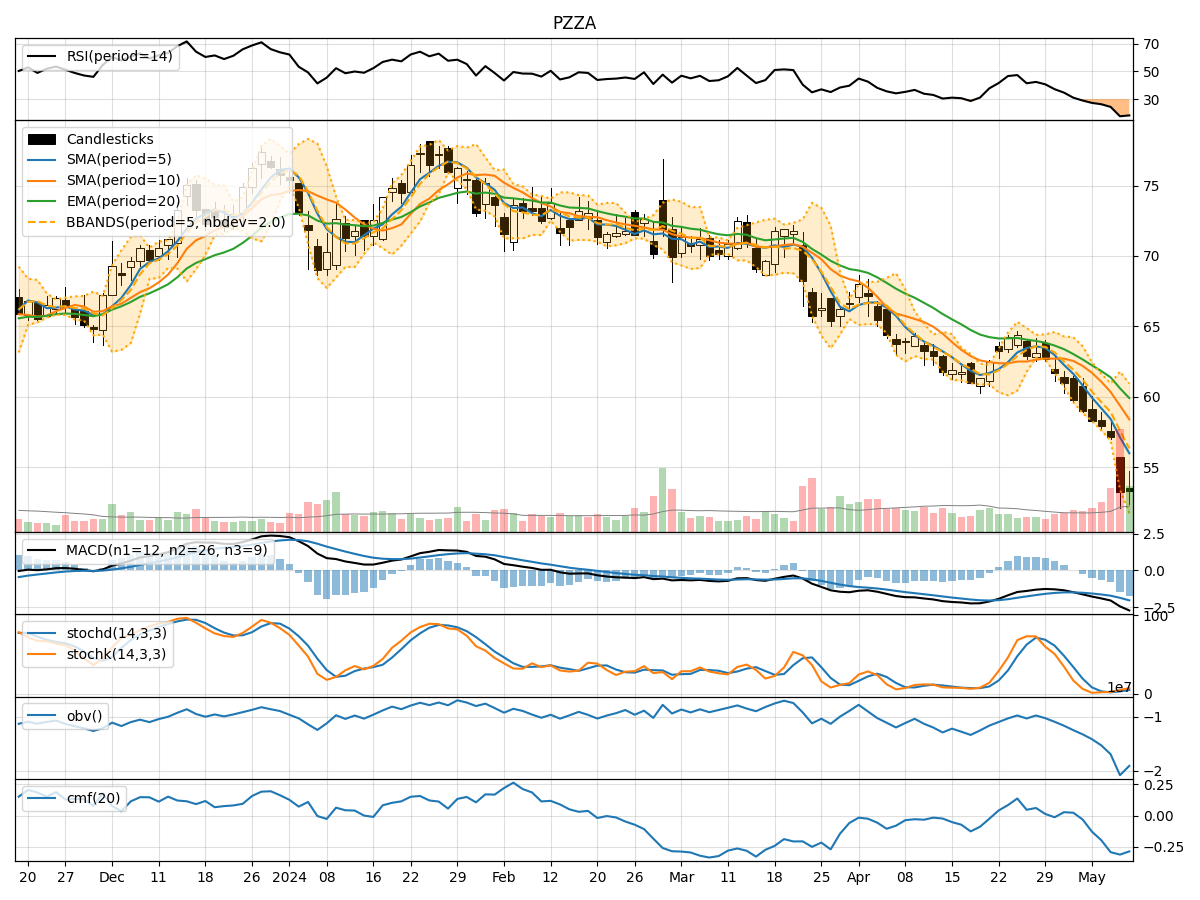
Technical Analysis of PZZA 2024-05-10
Overview:
In analyzing the technical indicators for PZZA over the last 5 days, we will delve into the trend, momentum, volatility, and volume indicators to provide a comprehensive outlook on the possible stock price movement. By examining these key aspects, we aim to offer valuable insights and predictions for the upcoming days.
Trend Analysis:
- Moving Averages (MA): The 5-day MA has been consistently declining, indicating a bearish trend.
- MACD: The MACD line has been decreasing, with the MACD line crossing below the signal line, signaling a bearish trend.
- EMA: The EMA has been trending downwards, further supporting the bearish sentiment.
Momentum Analysis:
- RSI: The RSI has been decreasing, suggesting a weakening momentum.
- Stochastic Oscillator: Both %K and %D have been declining, indicating a bearish momentum.
- Williams %R: The indicator is in oversold territory, signaling a potential reversal.
Volatility Analysis:
- Bollinger Bands (BB): The stock price has breached the lower Bollinger Band, indicating increased volatility and a potential oversold condition.
- Bollinger Band %B: The %B is below 0.2, suggesting the stock is oversold.
- Average True Range (ATR): ATR has increased, indicating higher volatility in the stock.
Volume Analysis:
- On-Balance Volume (OBV): The OBV has been consistently declining, reflecting selling pressure.
- Chaikin Money Flow (CMF): The CMF is negative, indicating outflow of money from the stock.
Conclusion:
Based on the analysis of the technical indicators, the stock of PZZA is currently in a bearish phase. The trend is downward, momentum is weakening, volatility is high, and volume is showing a consistent selling pressure. Considering these factors, the next few days are likely to see a continuation of the downward movement in the stock price. Traders and investors should exercise caution and consider short-term strategies to navigate the bearish market sentiment.